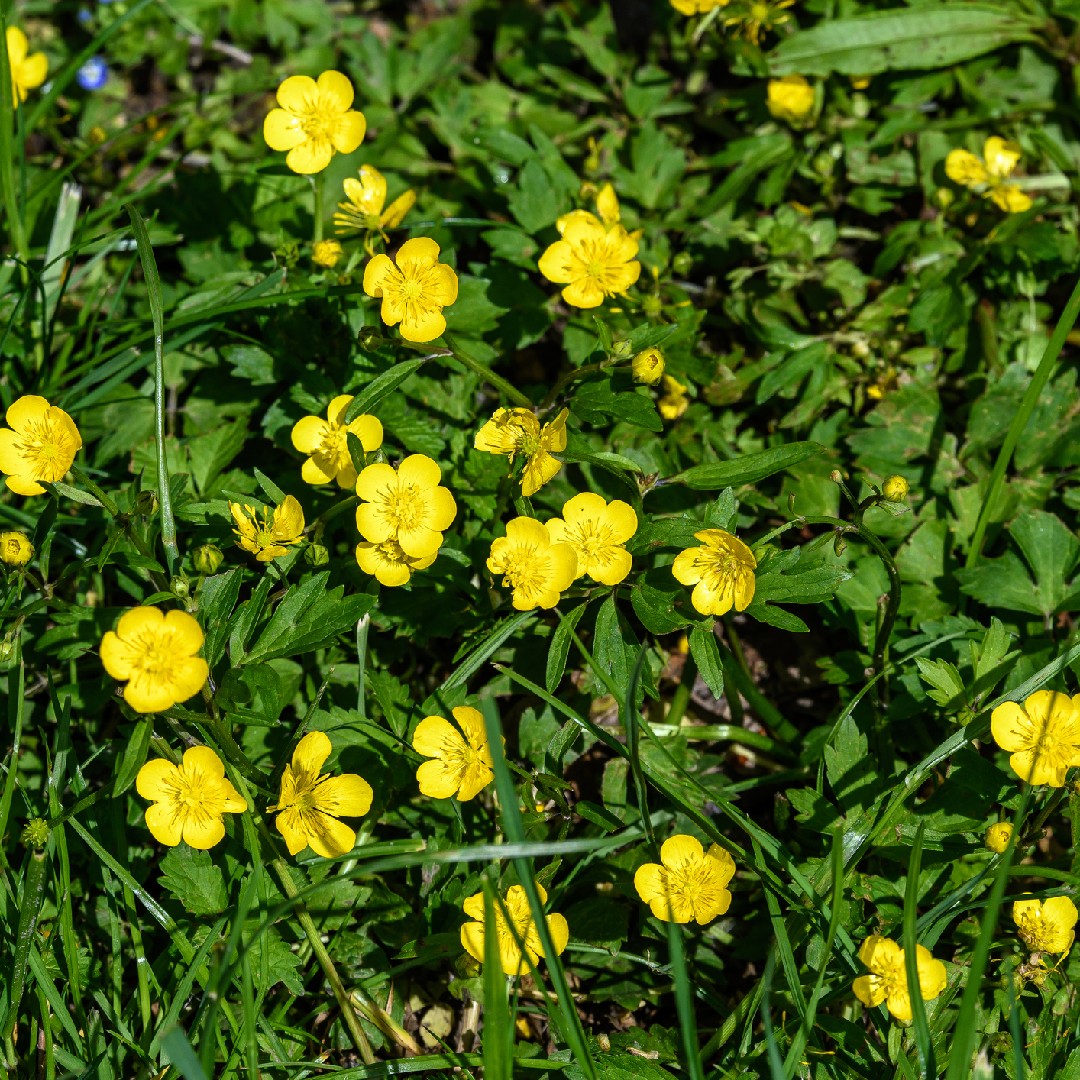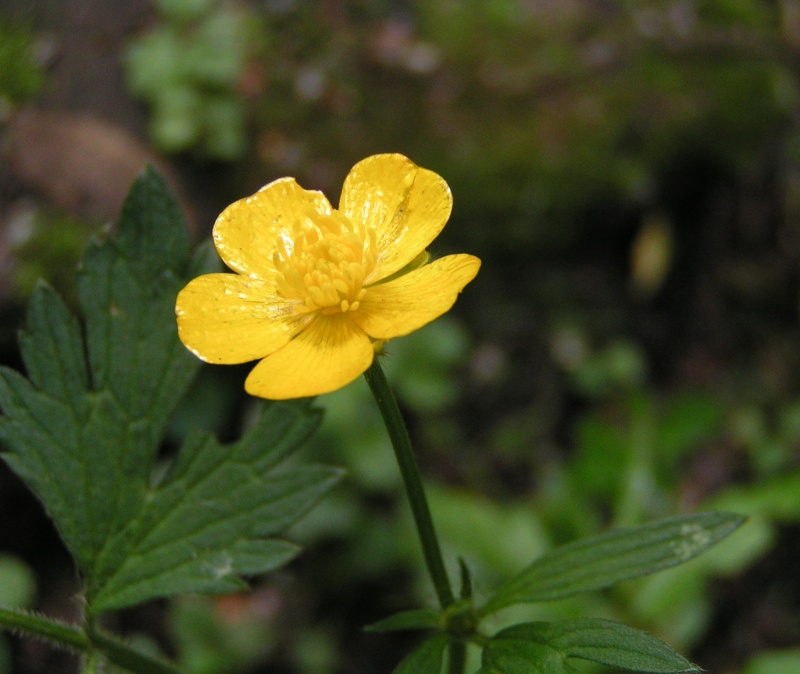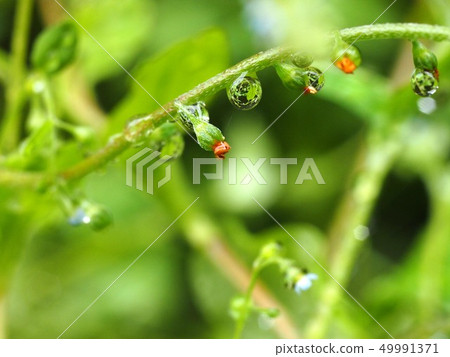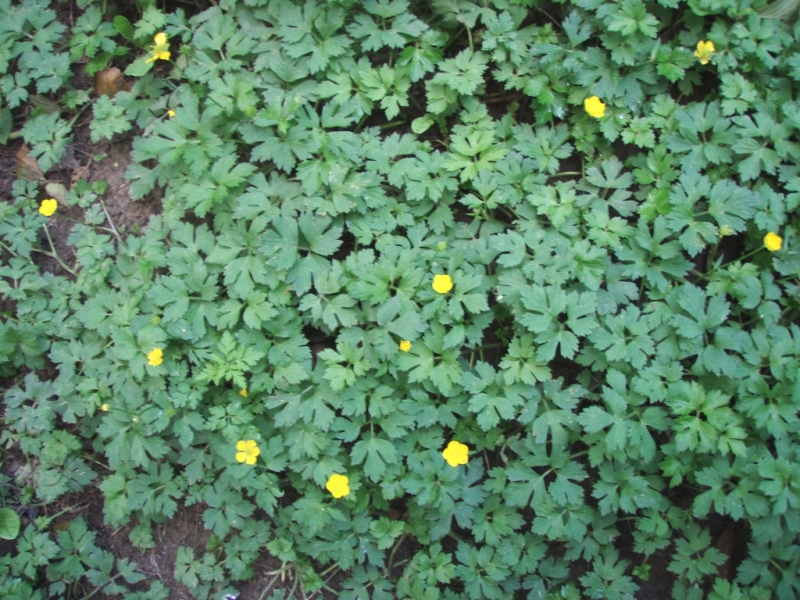Creeping Buttercup: How To Identify And Control This Invasive Weed
Creeping Buttercup: How to Identify and Control This Invasive Weed
Creeping buttercup (Ranunculus repens) is a perennial weed that is native to Europe and Asia. It was introduced to North America in the early 1800s and has since become naturalized in many parts of the continent. Creeping buttercup is a serious invasive weed that can quickly crowd out native plants and damage ecosystems.
Identification
Creeping buttercup is a low-growing plant with bright yellow flowers that bloom from spring to summer. The leaves are divided into three leaflets and have a hairy texture. The stems are creeping and can root at the nodes, which allows the plant to spread rapidly.
Creeping buttercup can be distinguished from other buttercup species by its creeping habit and hairy leaves. It is also more likely to be found in wet areas than other buttercups.
Impacts
Creeping buttercup is a serious invasive weed that can have a number of negative impacts on ecosystems. It can crowd out native plants, reducing biodiversity. It can also damage waterways by clogging them with its roots and leaves. Creeping buttercup can also be toxic to livestock and pets.
Control
There are a number of ways to control creeping buttercup. One option is to hand-pull the plants. This is most effective when the plants are young and have not yet flowered. When hand-pulling, be sure to remove the entire plant, including the roots.
Another option for controlling creeping buttercup is to use herbicides. There are a number of herbicides that are effective against creeping buttercup, but it is important to choose one that is safe for the environment and for the plants you want to protect.
If you have a large infestation of creeping buttercup, you may need to use a combination of hand-pulling and herbicides to control it.
Prevention
The best way to prevent creeping buttercup is to avoid introducing it to your property in the first place. If you are buying plants, be sure to check them for creeping buttercup and other invasive weeds. You can also help to prevent the spread of creeping buttercup by not mowing your lawn too short and by controlling erosion.
Conclusion
Creeping buttercup is a serious invasive weed that can have a number of negative impacts on ecosystems. However, there are a number of ways to control it, including hand-pulling, herbicides, and prevention. If you have creeping buttercup on your property, it is important to take steps to control it as soon as possible.
Creeping buttercup is a common weed that can be found in a variety of habitats, including lawns, gardens, and meadows. It is a perennial plant that spreads by underground runners, making it difficult to control. Creeping buttercup can be identified by its yellow flowers, which are typically about 2 cm in diameter. The leaves of creeping buttercup are deeply lobed and have a hairy texture.
If you are concerned about creeping buttercup in your yard, you can visit Home Gardening for more information about identification, control, and prevention. This website provides a wealth of resources for homeowners, including fact sheets, articles, and videos.
FAQ of creeping buttercup
- What is creeping buttercup?
Creeping buttercup is a perennial weed that is native to Europe and Asia. It has been introduced to North America and other parts of the world. Creeping buttercup is a low-growing plant with bright yellow flowers. It has a long, creeping stem that can spread quickly, making it a difficult weed to control.
- How do I identify creeping buttercup?
Creeping buttercup can be identified by its bright yellow flowers, which bloom from spring to fall. The leaves are oval-shaped and have a toothed edge. The stem is long and creeping, and it can root at the nodes. Creeping buttercup can be mistaken for other buttercup species, such as marsh buttercup and water buttercup. However, these species have different flower colors and leaf shapes.
- How do I control creeping buttercup?
There are a number of ways to control creeping buttercup. One way is to hand-weed the plants. This can be effective if the infestation is small. However, it is important to remove the entire plant, including the roots, to prevent it from regrowing. Another way to control creeping buttercup is to use herbicides. There are a number of herbicides that are effective against creeping buttercup. However, it is important to read the label carefully before using any herbicide, and to follow the instructions exactly.
- Is creeping buttercup poisonous?
Yes, creeping buttercup is poisonous. The sap of the plant can cause skin irritation, and if ingested, it can cause nausea, vomiting, diarrhea, and other symptoms. If you think you have been poisoned by creeping buttercup, it is important to seek medical attention immediately.
- Can I eat creeping buttercup?
No, you should not eat creeping buttercup. The plant is poisonous and can cause a variety of health problems.
- What is the life cycle of creeping buttercup?
Creeping buttercup is a perennial plant, which means it lives for more than two years. The plant overwinters as a rosette of leaves, and then grows rapidly in the spring. The flowers bloom from spring to fall, and the seeds are produced in late summer or early fall. The seeds can remain viable in the soil for several years, and can germinate when conditions are favorable.
- How can I prevent creeping buttercup from spreading?
There are a number of ways to prevent creeping buttercup from spreading. One way is to remove any plants that you see as soon as possible. Another way is to keep your garden free of weeds. You can also use a barrier to prevent the plant from spreading. For example, you can lay down a layer of mulch around your plants, or you can plant a barrier of shrubs or trees.
Image of creeping buttercup
- Creeping buttercup plant with yellow flowers.

- Close-up of creeping buttercup flower.

- Creeping buttercup plant with green leaves and yellow flowers.

- Creeping buttercup plant in a garden.
- Creeping buttercup plant in a forest.

- Creeping buttercup plant in a meadow.

- Creeping buttercup plant with dewdrops on the leaves.

- Creeping buttercup plant with a butterfly.

- Creeping buttercup plant with bees.
- Creeping buttercup plant with a snail.


Post a Comment for "Creeping Buttercup: How To Identify And Control This Invasive Weed"